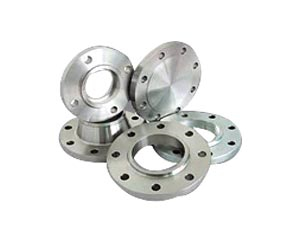| Separating one part of a line from another requires a spectacle blind, able to switch from closed to open and back again. Bleed rings provide a means to release pressure from the pipe through a controlled opening. | ||
| Spectacle flanges are known for their tensile strength, dimensional accuracy and durability. These flanges are made by using best quality material. We offers an extensive range of spectacle flanges in various dimensions and specification. | ||
|
These types of flanges are made from plate, and come in 3 different types: The first and most widely used type are spec blinds – short for spectacle: these are flanges with two equal outside diameter (OD) parts welded together by way of a ‘bridge’. One of the parts also contains an inside diameter (ID), while the other is a blank, or blind. A whole is put at the halfway mark of the bridge. These are also called spectacles, figure 8’s, and figure 8 blanks, because of their resemblance to reading glasses (spectacles) and figure 8’s. These are referred to as ‘Line Blanks’ in the ASME/ANSI standards. The second and third types are quite similar: both have longer bridges, referred to as ‘paddles’, which resemble longer handles. One type has only an OD, and so is a blind plate – similar in appearance to a large pizza oven peel. These are referred to as paddle blinds. The other type is exactly the same but comes with an ID as well, enabling flow-through when installed in a piping system. These pieces have holes in the paddle which enables field personnel to determine by sight which piece is installed in a system. These are referred to as paddle spacers, and are often supplied in sets together with the paddle blinds. All 3 types of these flanges are used in piping systems or pressure vessels where the flow needs to be interrupted from time to time. They are installed between two pipe flanges (as specified above), and by way of a screw inserted into the hole in the bridge or paddle, they are able to rotate or ‘swing’ into and out of position to interrupt or allow the flow, as the user sees fit. Our spec blind flanges are available with raised, flat, or RTJ faces. |
||
Spectacles Flanges | Spectacles Flanges Manufactures | Spectacles Flanges Exporters | Spectacles Flanges SuppliersSpectacles Flanges Flange | Spectacles Flanges Flange Manufacturers | Spectacles Flange Exporters | Spectacles Flange SuppliersSpectacles Flanges Manufacturers India | Spectacles Flanges Exporters India | Spectacles Flanges Suppliers India |
||
| The wide range of Spectacles Flanges offered by us is available in quality stainless steel and alloys. We offer our range in various technical specifications and in forms of slip on, socket weld, blind, lapped, screwed, weld neck, reducing, spectacle, slip on boss, plate, plate blank and screwed boss. Besides, this we can also provide customization facility as per demands of our clients. | ||

|
||
|
Materials used: Carbon Steel: ASTM A105, A350 LF1,LF2 CL1/CL2 LF3 CL1/CL2, ASTM A694 F42,F46,F48,F50,F52,F56,F60,F65,F70 Stainless Steel: ASTM A182 F304/304L, F316/316L, F316H,F316Ti,F321,F44(UNS S31254) Alloy Steel: ASTM A182 F1,F5/a,F9,F11,F12,F22,F91 Duplex&Super Duplex Steel: ASTM A182 F51/UNS S31803,F53/UNS S32750 F55/UNS S3260 Special Alloy Steel: Monel400,Inconel 600, Inconel 625, Inconel 800, Inconel 825, chrome-moly |
|
Key Features: Can be attached to the pipe without welding (sometimes an additional seal weld is used as well) Ideal for higher pressure and temperature applications for small pipe sizes Not recommended for larger loads, especially when subjected to higher torque |
|
Uses of threaded flanges:
|

